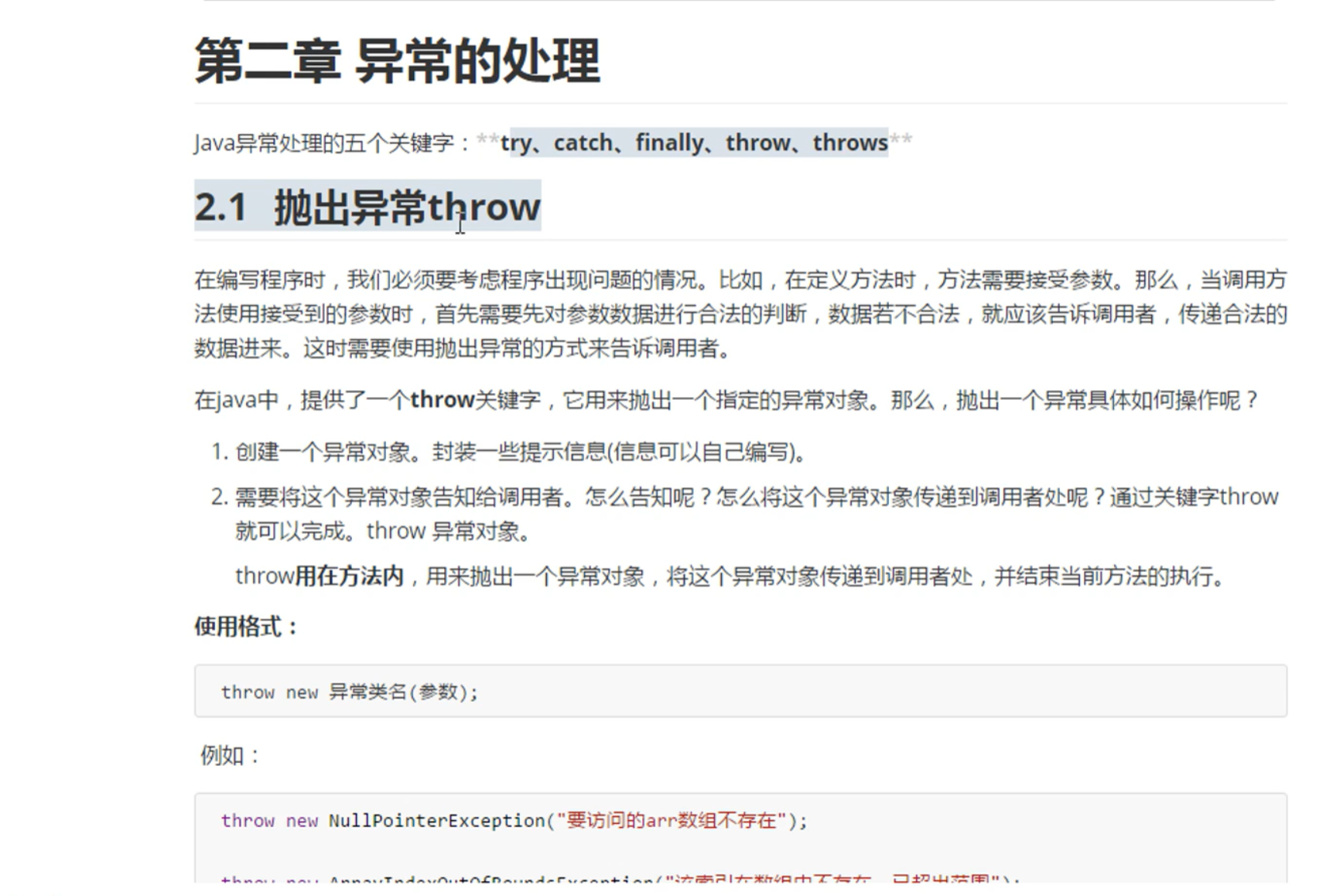
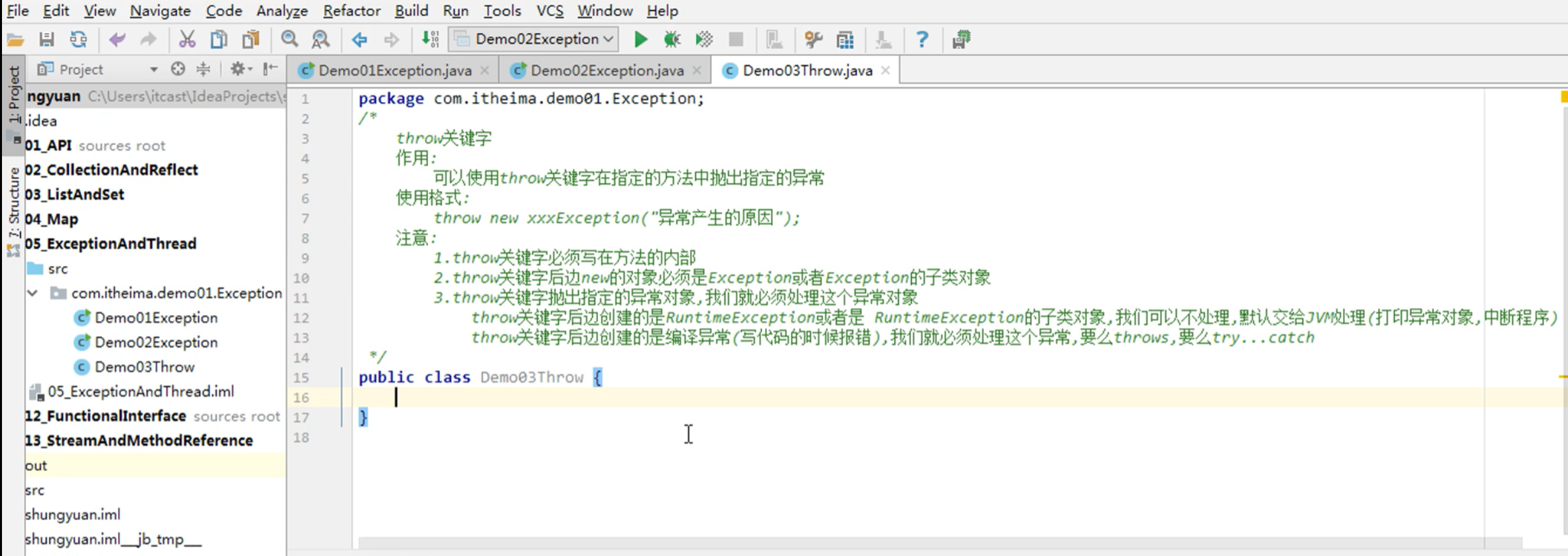
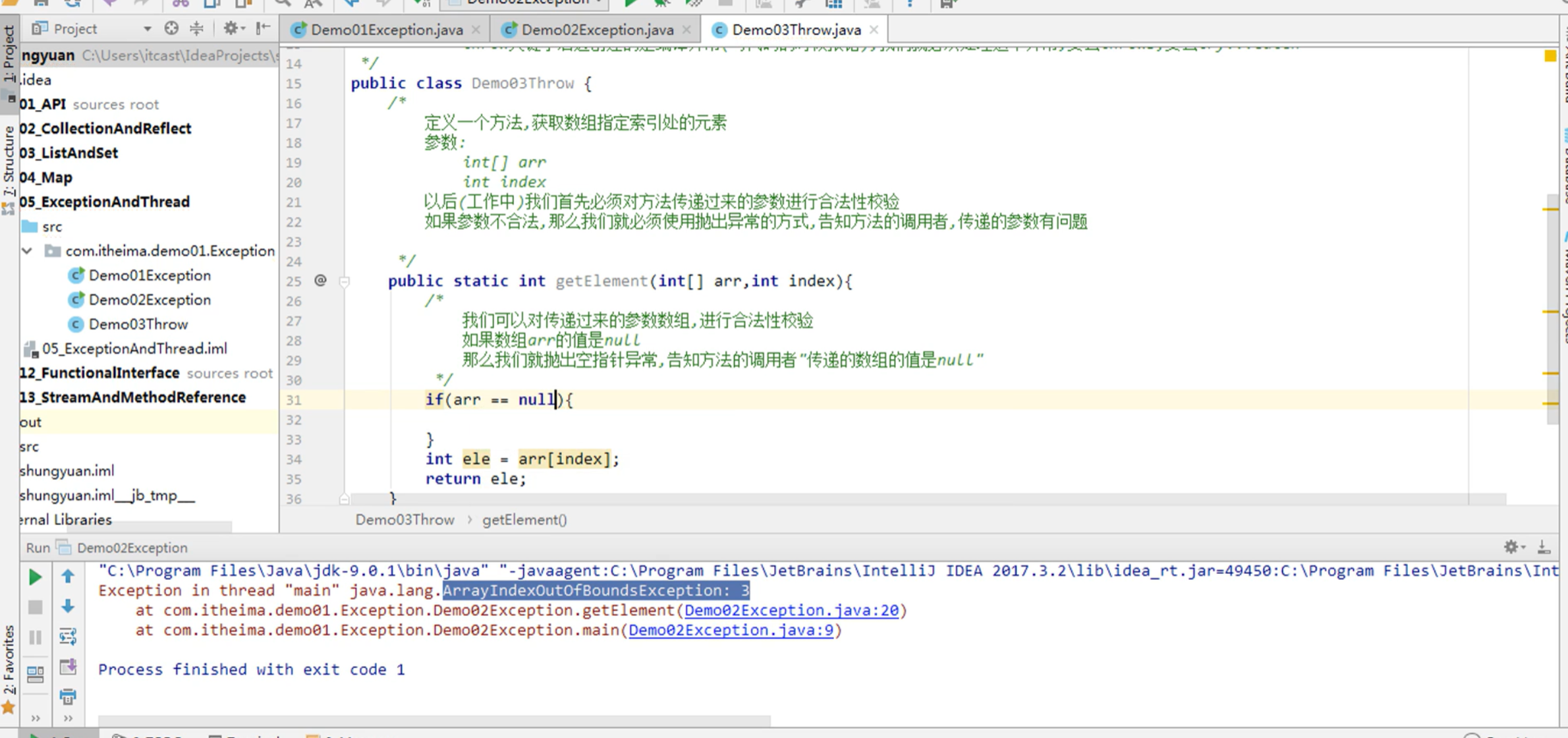
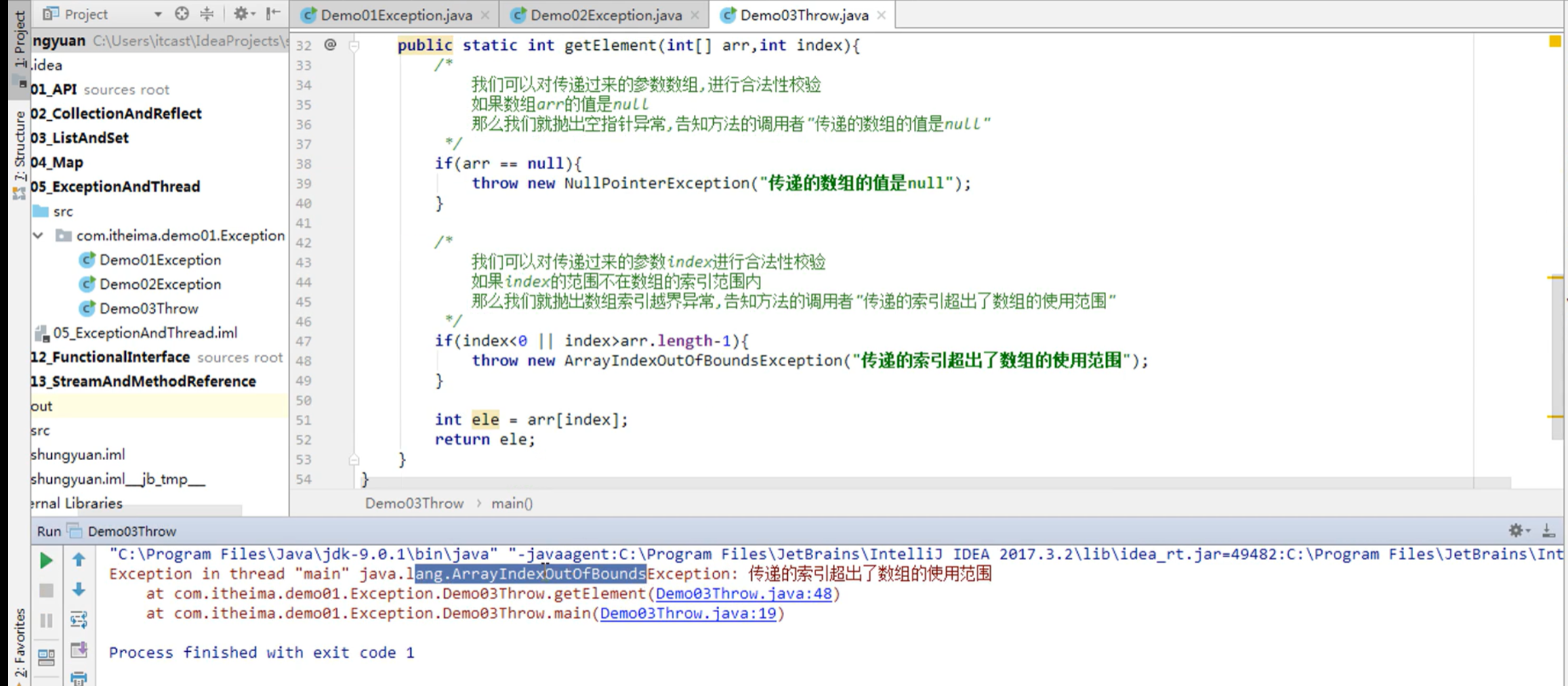
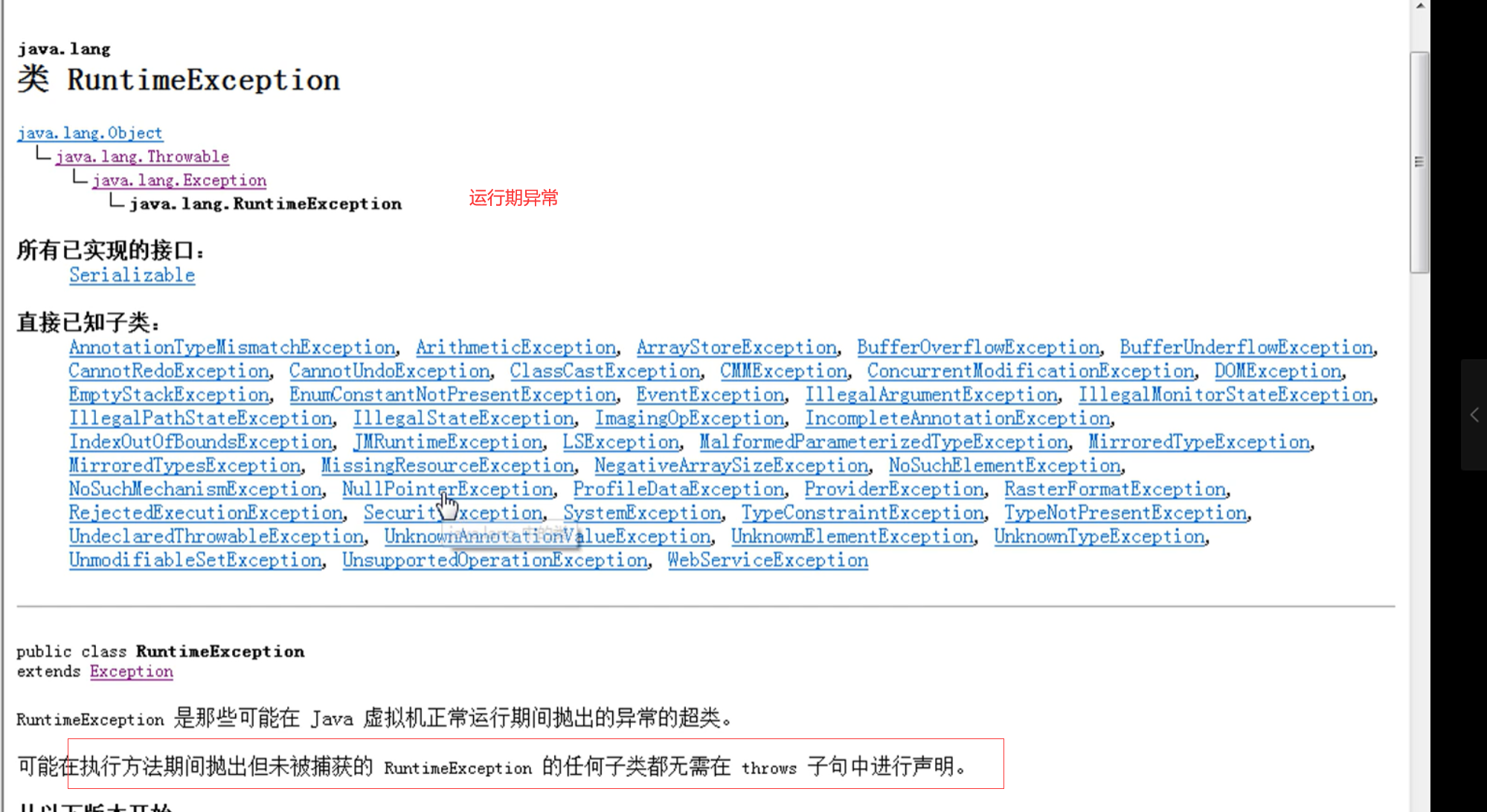

抛出throw关键字
throw关键字
作用:
可以使用throw关键字在指定的方法中抛出指定的异常
使用格式:
throw new xxxException("异常产生的原因");
注意:
1.throw关键字必须写在方法的内部
2.throw关键字后边new的对象必须是Exception或者Exception的子类对象
3.throw关键字抛出指定的异常对象,我们就必须处理这个异常对象
-
throw关键字后边创建的是RuntimeException或者是 RuntimeException的子类对象,我们可以不处理,默认交给JVM处理(打印异常对象,中断程序)
-
throw关键字后边创建的是编译异常(写代码的时候报错),我们就必须处理这个异常,要么throws,要么try...catch
public class Demo03Throw {
public static void main(String[] args) {
//int[] arr = null;
int[] arr = new int[3];
int e = getElement(arr,3);
System.out.println(e);
}
/*
定义一个方法,获取数组指定索引处的元素
参数:
int[] arr
int index
以后(工作中)我们首先必须对方法传递过来的参数进行合法性校验
如果参数不合法,那么我们就必须使用抛出异常的方式,告知方法的调用者,传递的参数有问题
注意:
NullPointerException是一个运行期异常,我们不用处理,默认交给JVM处理
ArrayIndexOutOfBoundsException是一个运行期异常,我们不用处理,默认交给JVM处理
*/
public static int getElement(int[] arr,int index){
/*
我们可以对传递过来的参数数组,进行合法性校验
如果数组arr的值是null
那么我们就抛出空指针异常,告知方法的调用者"传递的数组的值是null"
*/
if(arr == null){
throw new NullPointerException("传递的数组的值是null");
}
/*
我们可以对传递过来的参数index进行合法性校验
如果index的范围不在数组的索引范围内
那么我们就抛出数组索引越界异常,告知方法的调用者"传递的索引超出了数组的使用范围"
*/
if(index<0 || index>arr.length-1){
throw new ArrayIndexOutOfBoundsException("传递的索引超出了数组的使用范围");
}
int ele = arr[index];
return ele;
}
}